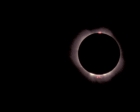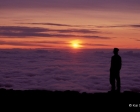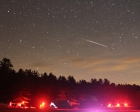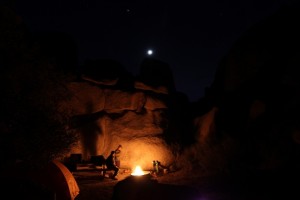Curiosity Lands!

When Science Fiction becomes Science Fact
This evening humans made history with the successful landing of the fourth and most complicated rover mission to Mars.
What struck me as most incredible was the opening presentation at the Planetary Society, several hours before telemetry from Curiosity was provided, wherein it was made clear that science fiction does become science fact, that the shared dreams of thousands of people across this planet made is possible to land on another. This is the unifying power of science, to bring people together for a common goal, a greater good.
We owe an entire generation of vision and motivation to accomplish the impossible to the likes of Carl Sagan, Isaac Asimov, Arthur C. Clarke, Ray Bradbury and others for before there was the reality of space travel, there was science fiction which created the dream of space travel we are now fulfilling.
What touched me deepest was when Ann Druyan, widow of the late, great Carl Sagan spoke about the Voyager I and II spacecraft. Each carries a representation of humanity through mathematics, music, art, language, religion, and philosophy on gold discs intended to last a billion years.
Included is something I was not aware of–a recording of Ann’s brain waves while she meditated for an hour, just two days after she and Carl expressed their love for each other. For all the airwaves broadcast into interstellar space at the speed of light which depict our capacity for unbridled xenophobic dysfunction, there are also two gold discs speeding at 38,000 miles per hour in opposite directions, carrying a different kind of message, one of the perfect marriage of science and art and our capacity for something even greater.
As Jim Bell, President of the Planetary Society and Chief Photographer for the Mars Rovers said, “Unbelievable… phenomenal… miraculous… audacious… Words can’t describe the experience, and now we have another rover on Mars and a glorious mountain in front of us to explore.”
For more information, visit www.nasa.gov/msl/
* all images are screenshots of the streaming internet broadcast from the Planetary Society and NASA, August 5, 2012







































![[unknown] & scope, 2012, Mauna Kea, Big Island, Hawaii by Kai Staats [fusion_builder_container hundred_percent=](http://www.kaistaats.com/wp-content/uploads/2012/06/setup-85x128.jpg)









